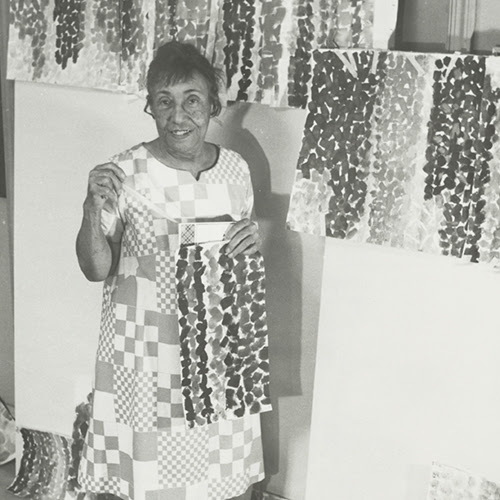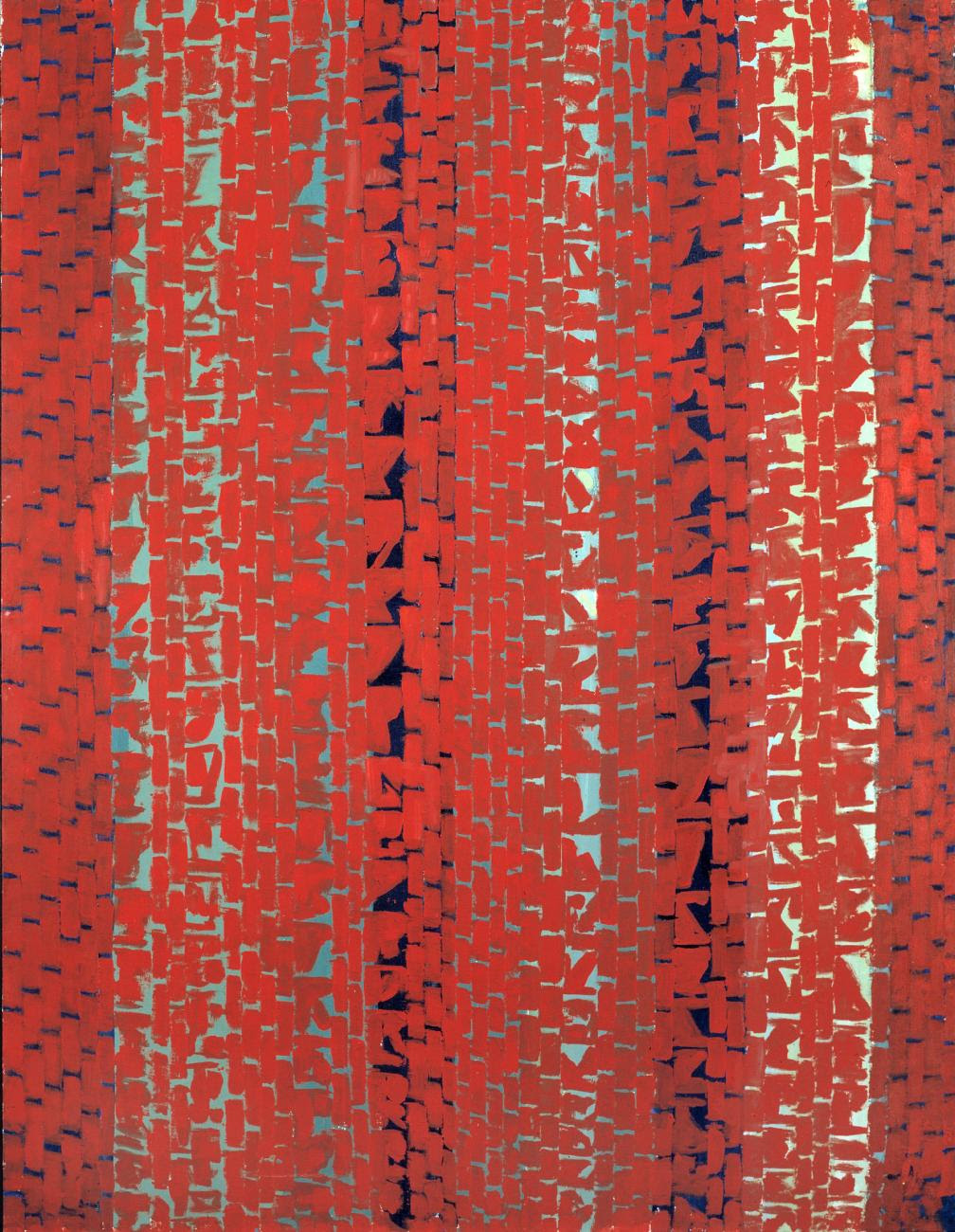Monday, April 12, 2021 – JOYOUS COLORS FROM THE WASHINGTON, DC ARTIST


335th Issue
Monday, April 12, 2021
COMPOSING COLOR:
THE ART OF
ALMA THOMAS
AT THE
SMITHSONIAN AMERICAN ART MUSEUM


The Eclypse, 1970 Acrylic on Canvas
Alma Thomas is a singular figure in the story of twentieth-century American art. She developed her exuberant form of abstract painting late in life, after retiring from a long career as a schoolteacher. Blossoming in the mid-1960s, her vibrant, rhythmic art transcended established genres, incorporating elements of gestural abstraction and color field painting. She created a style distinctly her own, characterized by the dazzling interplay of pattern and hue. At a deeply politicized moment in American life, Thomas’s abiding sources of inspiration were nature, the cosmos, and music. “Through color,” she stated, “I have sought to concentrate on beauty and happiness, rather than on man’s inhumanity to man.”
Thomas’s art first entered the Smithsonian American Art Museum’s collection in 1970. The museum acquired more than a dozen works during the artist’s lifetime and, upon her death, received thirteen canvases by bequest.
Composing Color: Paintings by Alma Thomas draws on these extensive holdings to offer an intimate view of Thomas’s evolving practice during her most prolific period, 1959 to 1978. New research into her materials and techniques show how Thomas continued to innovate until the end of her life, at times changing her methods to adapt to her declining physical ability due to arthritis. As the luminous works in the exhibition reveal, Thomas’s astounding creative drive and mastery of color remained constant through her final years.
After the exhibition closes at SAAM, it will travel to several venues across the United States.

Red Abstraction, 1959 Oil on Canvas
Alma Woodsey Thomas
1891–1978
Thomas was born in Columbus, Georgia, the oldest of four girls. In 1907, her family moved to Washington, D.C., seeking relief from the racial violence in the South. Though segregated, the nation’s capital still offered more opportunities for African Americans than most cities in those years.
As a girl, Thomas dreamed of being an architect and building bridges, but there were few women architects a century ago. Instead, she attended Howard University, becoming its first fine arts graduate in 1924. In 1924, Thomas began a 35 year career teaching art at a D.C. junior high school. She was devoted to her students and organized art clubs, lectures, and student exhibitions for them. Teaching allowed her to support herself while pursuing her own painting part-time.
Thomas’s early art was realistic, though her Howard professor James V. Herring and peer Loïs Mailou Jones challenged her to experiment with abstraction. When she retired from teaching and was able to concentrate on art full-time, Thomas finally developed her signature style.
She debuted her abstract work in an exhibition at Howard 1966, at the age of 75. Thomas’ abstractions have been compared with Byzantine mosaics, the Pointillist technique of Georges Seurat, and the paintings of the Washington Color School, yet her work is quite distinctive.
Thomas became an important role model for women, African Americans, and older artists. She was the first African American woman to have a solo exhibition at New York’s Whitney Museum of American Art, and she exhibited her paintings at the White House three times. Artist Details

Light Blue Nursey, 1968, Acrylic on Canvas

Snoopy Sees the Earth Wrapped in Sunset ,1970 Acrylic on Canvas

Snoopy Earth Sun Display on Earth, 1970 Acrylic on Canvas

Red Sunset Old Pond Concerto 1972 Acrylic on Canvas

Aquatic Gardens, 1973 Acrylic on Canvas

Wind and Crepe Myrtle Concerto 1973 Acrylic on Canvas

White Roses Sing and Sing, 1976 Acrylic on Canvas
MONDAY PHOTO
Send your entry to ROOSEVELTISLANDHISTORY@GMAIL.COM

WEEKEND PHOTO
INTERIOR OF THE OCTAGON IN 1970
Alexis Villefand, Arlene Bessenoff, Gloria Herman and Jay Jacobson got it right

Text by Judith Berdy
Thanks to Bobbie Slonevsky for her dedication to Blackwell’s Almanac and the RIHS
Thanks to Deborah Dorff for maintaining our website
Edited by Melanie Colter and Deborah Dorff
Sources:
SMITHSONIAN AMERICAN ART MUSEUM
National Museum of Women in the Arts
FUNDING PROVIDED BY ROOSEVELT ISLAND OPERATING CORPORATION PUBLIC PURPOSE GRANTS CITY COUNCIL REPRESENTATIVE BEN KALLOS DISCRETIONARY FUNDING THRU DYCD


Copyright © 2021 Roosevelt Island Historical Society, All rights reserved.Our mailing address is:
rooseveltislandhistory@gmail.com

Leave a comment